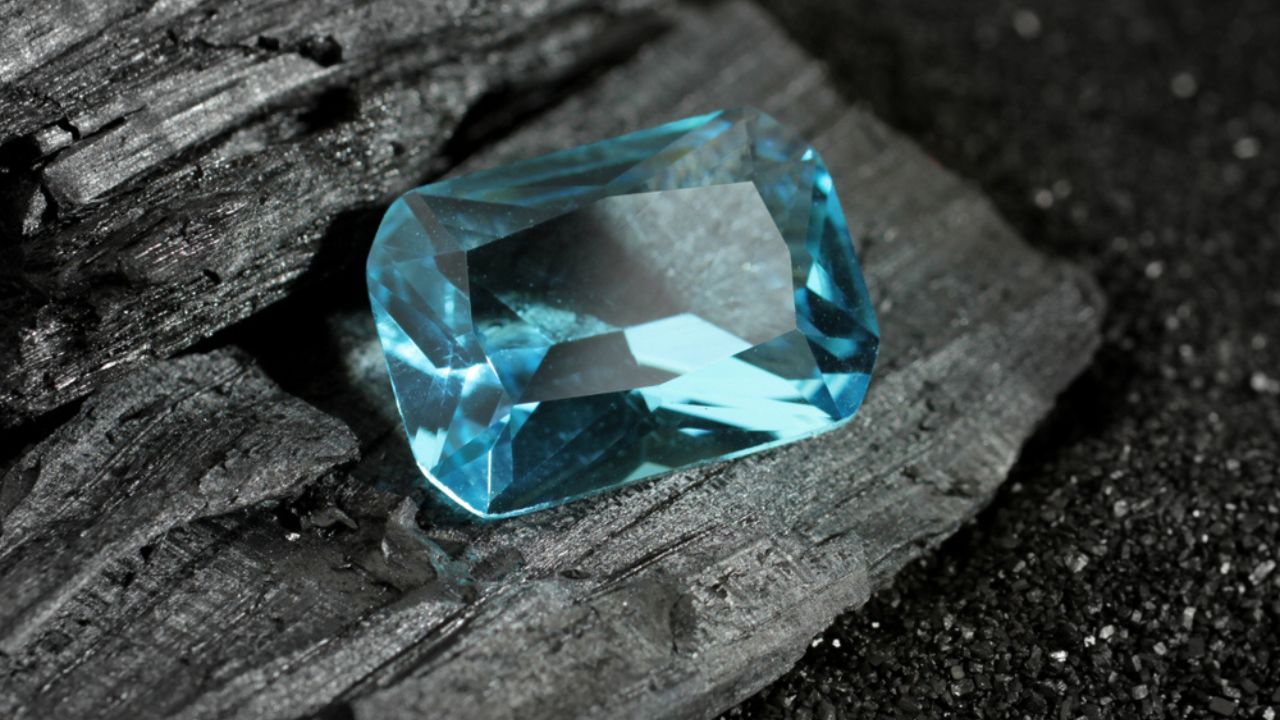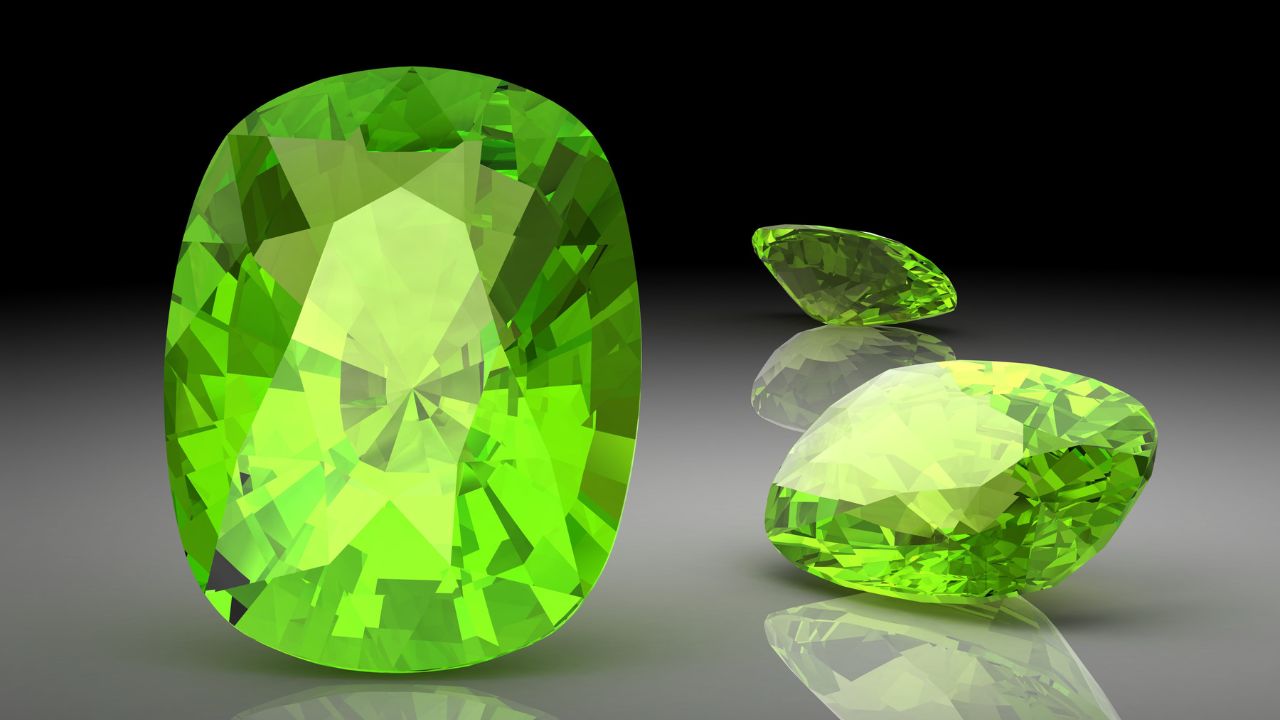
Where Is the Gemstone Aquamarine From?
Treasured for its oceanic hues, aquamarine is a breathtaking gemstone mined across the globe, including top sources Brazil, Nigeria, Madagascar, and Mozambique. Deriving its name from the Latin for “water” and “sea,” aquamarine belongs to the beryl mineral family. Forming sizable six-sided crystals up to a foot long, aquamarine lends itself to cutting faceted statement stones.
As the traditional March birthstone with blue tones evoking the season's refreshing rains, aquamarine also commemorates nineteenth wedding anniversaries.
In this article, we trace aquamarine’s origins and survey key localities for this gemstone as captivating as its namesake waters.
Chemical Make-up of Aquamarine
Aquamarine is a member of the beryl family, which also includes other gemstones like emerald. Its chemical composition is beryllium aluminum silicate, giving it its unique properties. With a hardness rating of 7.5-8 on the Mohs scale, aquamarine is relatively durable and suitable for everyday wear.
The beryl family of gemstones is characterized by their hexagonal crystal structure, which contributes to their stunning appearance. Aquamarine's crystal formation can make it slightly brittle, but proper care can ensure its longevity.
Aquamarine's Composition
- Aquamarine belongs to the beryl family of gemstones.
- Its chemical composition is beryllium aluminum silicate.
- It has a hardness rating of 7.5-8 on the Mohs scale.
- Aquamarine's hexagonal crystal structure adds to its visual appeal.

Overall, aquamarine's chemical make-up makes it a versatile gemstone that can be used in a variety of jewelry designs, from delicate pieces to statement accessories. Its hardness ensures that it can withstand regular wear, while its beautiful hue adds a touch of elegance to any ensemble.
Aquamarine, a captivating gemstone with its serene blue hues, is formed deep inside the Earth. It is typically found in various types of rock, including igneous and metamorphic rock. Aquamarine requires the presence of large amounts of beryllium for its formation, making it a beryllium-rich mineral. The unique blue color of aquamarine is a result of iron impurities present within the crystal structure.
The shade of blue can vary depending on the way in which the iron was incorporated during the formation process. From pale blue to deep blue-green, aquamarine's color range is a stunning reflection of the ocean's calming beauty. It is important to note that aquamarine specifically comes in shades of blue and does not come in any other color variations.
 Due to its vibrant color and breathtaking allure, aquamarine is highly prized as a gemstone for jewelry. Whether set in a delicate pendant or adorned in an intricate ring, the blue color of aquamarine never fails to captivate the hearts of jewelry enthusiasts.
Due to its vibrant color and breathtaking allure, aquamarine is highly prized as a gemstone for jewelry. Whether set in a delicate pendant or adorned in an intricate ring, the blue color of aquamarine never fails to captivate the hearts of jewelry enthusiasts.
Aquamarine Origin and Deposits
Aquamarine, a stunning gemstone admired for its serene blue color, originates from various locations around the world. While the gemstone was initially discovered in Siberia, large deposits have been found in Western Europe. Today, the main sources of aquamarine are Brazil and Pakistan, known for producing high-quality stones of varying shades of blue.
Aside from Brazil and Pakistan, aquamarine can also be found in the Ural mountains in Russia, China, California, Colorado, Myanmar, Ukraine, and several countries in Africa. These regions possess smaller deposits of aquamarine, contributing to the global supply of this captivating gemstone.
When it comes to mining aquamarine, surface deposits and strip mining methods are commonly employed. The gemstone is not found in deep enough deposits to warrant shaft mining. Through these mining techniques, aquamarine is carefully extracted, allowing gemstone enthusiasts and jewelry designers alike to obtain the highly sought-after aquamarine for their creations.
Valuation of Aquamarine
Aquamarine is a gemstone that offers both beauty and affordability. When determining the value of aquamarine, several factors come into play. One of the most significant factors is the weight of the stone. Generally, larger aquamarines are more valuable.
The color of the aquamarine is also important in determining its value. Deep, vibrant blue stones are highly sought after and command higher prices. In contrast, lighter shades of blue may be more affordable. The clarity of the stone is another consideration. Aquamarines with fewer inclusions are typically more valuable and desirable.
The cut of the aquamarine can also affect its value. Well-cut stones with good proportions and symmetry enhance the brilliance and beauty of the gem. Aquamarines that have been cut and faceted by skilled artisans can command higher prices.
Factors Affecting Aquamarine Price:
- Weight
- Color
- Clarity
- Cut
Compared to other gems in the beryl group, like emerald, aquamarine is thought to be a more affordable gemstone. Aquamarine is a popular choice for both new and experienced gemstone lovers because it is easy to find and doesn't cost too much.

Aquamarine remains highly sought after for its spacious, oceanic palette. Its blue-green hues realize our watery dreams. With sources scattered across the globe from Brazil to Mozambique, aquamarine continues alluring jewelry makers and gem enthusiasts. As a durable gemstone suited for sizable cuts, aquamarine delights consumers with next level colored stone effects.
A lovely choice to accent spring wardrobes or commemorate nineteenth wedding anniversaries, aquamarine retains its mystique and elegance. For these reasons and more, the vibrant blues of aquamarine will likely enthrall us for years to come.
Like depths still unexplored, aquamarine conjures visions of vast waters yet waiting to submerge our imagination.
FAQ
Where is the gemstone aquamarine from?
Aquamarine is mainly mined in Brazil, but it is also found in other countries including Nigeria, Madagascar, Zambia, Pakistan, and Mozambique.
What is the chemical make-up of aquamarine?
Aquamarine is a member of the beryl family and has a chemical composition of beryllium aluminum silicate. It has a hardness of 7.5-8 on the Mohs scale.
How is aquamarine formed and what gives it its color?
Aquamarine forms deep inside the Earth in various types of rock. The blue color of aquamarine is a result of iron present in the crystal.
Where can aquamarine be found?
Aquamarine is mainly found in Brazil and Pakistan. Other mining locations include the Ural mountains in Russia, China, California, Colorado, Myanmar, Ukraine, and various countries in Africa.
How is aquamarine valued?
The value of aquamarine is determined by factors such as weight, color, cut, and clarity. Larger and more intensely blue aquamarines are generally more valuable.
What are the key points about aquamarine?
Aquamarine is a gemstone primarily mined in Brazil but also found in other countries. It is a member of the beryl family with a chemical make-up of beryllium aluminum silicate. Aquamarine forms deep inside the Earth and its blue color is a result of iron present in the crystal. It is valued for its color, with more intensely blue stones being more valuable. Aquamarine is relatively affordable compared to other gemstones in the beryl group.


